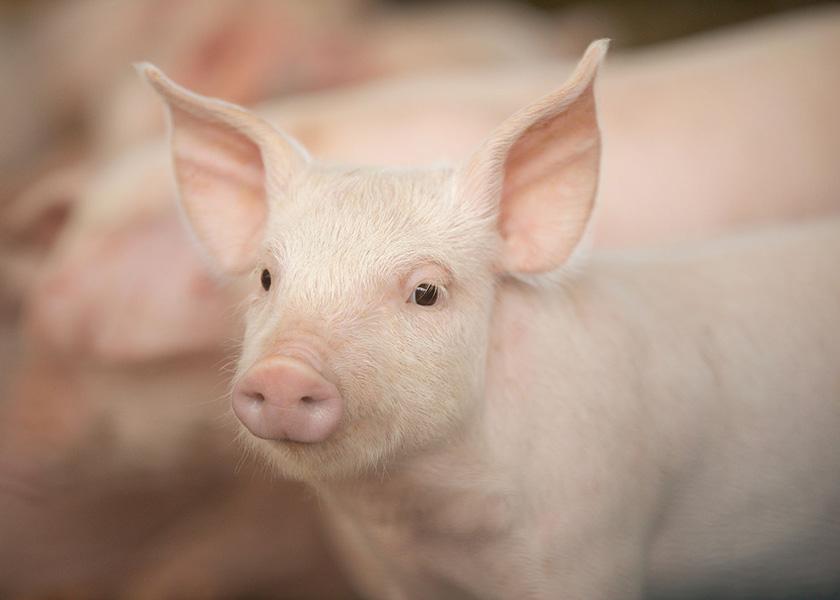The Path to a PRRS-Resistant Pig: A Look at What’s Next

Where is the pork industry on its path to a PRRS-resistant pig? Matt Culbertson, chief operating officer at PIC, says the industry is entering the final chapter of the story before the opportunity to commercialize pig genetics that are resistant to porcine reproductive and respiratory syndrome (PRRS). These pigs were developed utilizing non-transgenic gene editing to inactivate a specific gene, CD163, that exists in the pig and allows PRRS infection to occur.
“We are at the point of finalizing regulatory approval activities in multiple geographies around the globe that should allow the necessary framework for not only production in many key pork producing countries, like the U.S., but also for uninterrupted global movement of pork products,” Culbertson said during a presentation at the Carthage Swine Conference.
PIC is scaling up its own internal production of the PRRS-resistant populations to be ready for the potential launch.
In addition, PIC is actively engaged in market acceptance activities around the globe that highlight the benefits of the product to stakeholders across the pork chain from producers and packer/processors to retail/food service and consumers.
Prioritizing People, Pigs, Planet and Profit
Around the globe, the pork industry is continually challenged to do more with less and meet consumers’ evolving expectations for agriculture and protein production. Predictability feels like a thing of the past, he pointed out. Between inflation and volatility, labor and staffing, animal health and welfare, geopolitical uncertainty, antimicrobial stewardship and food availability/affordability, there are many factors stacked against swine production and agriculture right now.
“I believe we need to continue to challenge ourselves and look for innovative solutions to try to combat some of those factors working against us to make life a little bit more predictable and enjoyable for all of us going forward,” Culbertson said.
PIC believes that gene editing in general, and the PRRS-resistant pig as a dramatic initial example, is an exciting opportunity, he said.
“The PRRS-resistant pig can improve the sustainability and efficiency of pork production for our customers in a way that aligns with the evolving expectations of the food chain – specifically increased sustainability, decreased need of antibiotic use and improved animal health and well-being,” Culbertson explained. “We are thoughtfully and transparently working across the globe to responsibly introduce this technology.”
Why It Hits Home
What makes this journey so rewarding for Culbertson personally is that he grew up in agriculture and the swine industry. He calls himself a “true believer in the inherent motivation and innovation of the people in the swine industry.” This includes some very personal examples within his own family, that have driven the continual improvement the industry has realized over the last decades.
“That is a large part of what motivates me, and I believe very similar for our entire team, to care so deeply about a successful commercialization of the PRRS-resistant pig. Gene editing is well aligned with evolving priorities and demands of the global marketplace,” Culbertson said.
As a scientist, he can see the exciting breakthroughs that gene editing continues to deliver across human health and production agriculture. He also can see multiple gene-edited “products” in the pipeline across various plant and animal species.
What’s Next?
Precise genetic change yields consistent results, he pointed out. Research continues to show that when challenged with contemporary PRRS strains, the PRRS-resistant pigs show no signs of disease. Meanwhile, the non PRRS-resistant pigs do.
“The PRRS-resistant pigs aren’t more robust – they simply don’t get that disease,” he explained.
The path to approval started in 2021 with product claim and methods and moved forward to molecular characterization in 2022. This year, in 2023, we’ve been focusing on animal characterization, which includes phenotypic characterization, phenotypic durability, genotypic durability, and food and environmental safety.
Culbertson noted that PIC anticipates FDA approval in the first half of 2024. Meanwhile, progress is happening in other countries, too.
“I believe that a successful launch of the PRRS-resistant pig positions our industry and all of agriculture to continue to utilize innovation to improve the production of safe, affordable, sustainable, high-quality food that is well aligned with the consumers of today and tomorrow,” he said.
Read More:
Virus-Resistant Pigs Provide Answers to Global Threats
Genus and The Roslin Institute Team Up to Produce PRRS-Resistant Pigs
Gene Editing: Experts Say it’s Time to Remodel Regulatory Landscape







